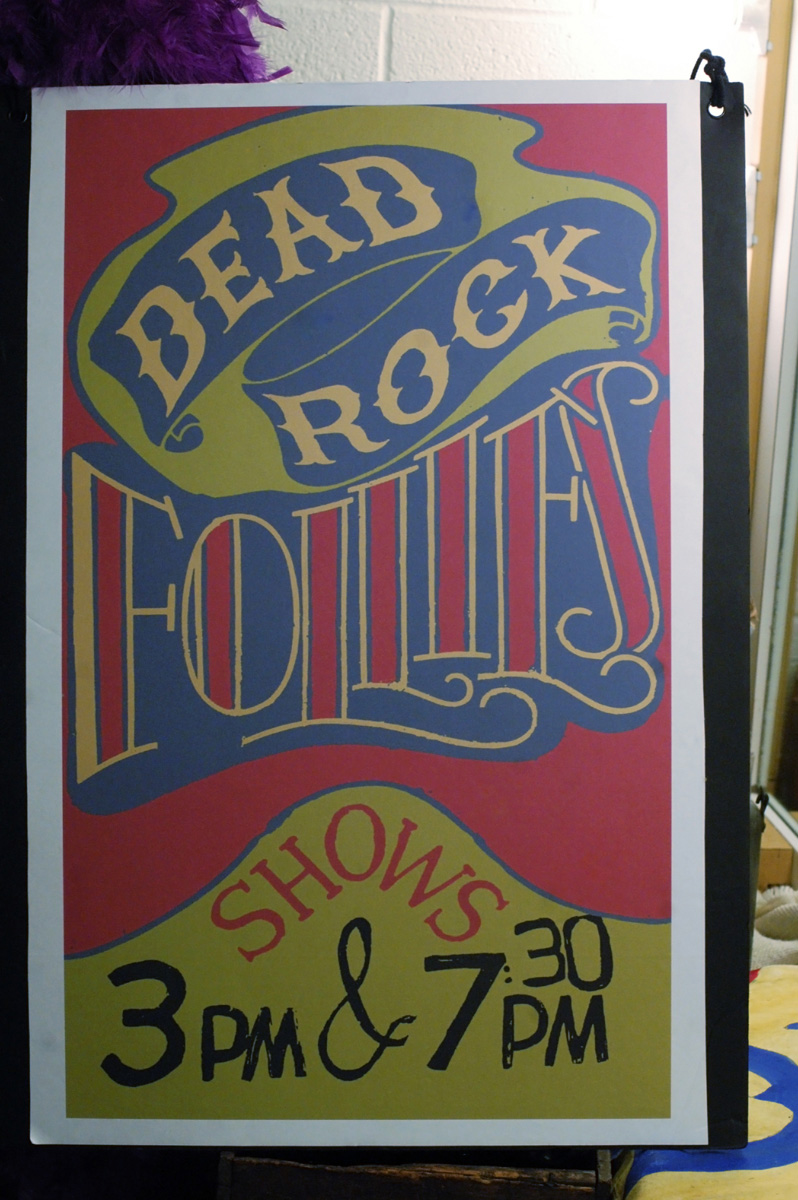I have already shown off some of the props in the recent production of Crazy for You which I prop mastered, but I thought I would show a bit more of what I did on that show.
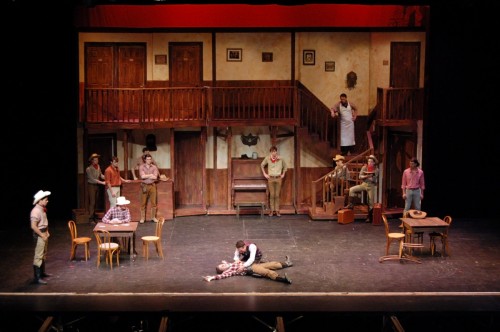
The saloon was one of the larger set pieces in this production. I dressed it out with photographs, plaques, signs and other items. Several of the objects were rigged for “tricks”, including the cuckoo clock on the second floor above the man in the apron, the antlers above the piano, and the jar on top of the piano (I highlighted the piano in a previous post). I also built the two tables you see above.
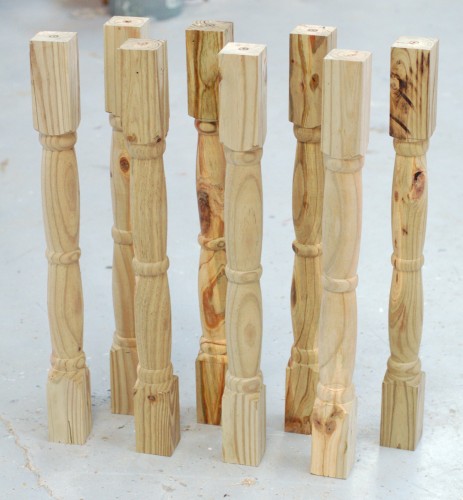
I turned the legs on a lathe to match a table the set designer and I both liked. Even though the scope and scale of this show was already pretty huge, taking the time to turn these legs really helped transform the scene.
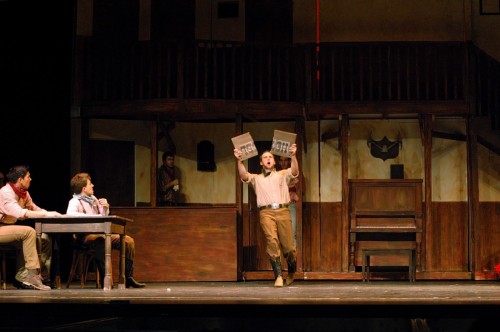
The saloon also had a “hotel” sign hanging throughout the show. In the second act, the hotel’s proprietor finally grabs the sign and smashes it over his head. I made a new sign for every performance. It was a piece of lauan with grooves scored in the back with a Dremel to make it easy to break. The front was painted with a quick wash and then the letters were spray-painted on with a stencil I made.
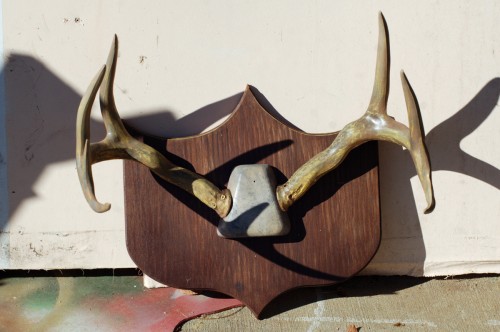
I needed to find a set of antlers for one of the tricks, but had no such luck. I ended up buying some fake antlers; these are meant to simulate the sound of real antlers hitting each other and are used by hunters to draw out deer. I cut out a plaque with a routed edge, mounted the antlers, and painted everything.
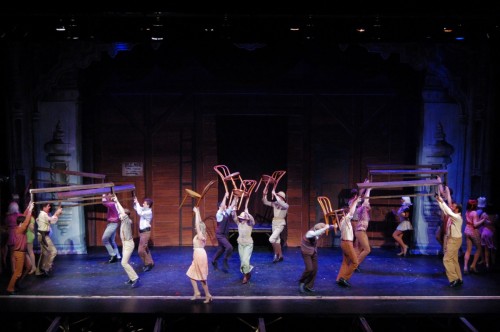
Several other scenes used a number of benches which saw some heavy-duty use. These benches were carried around (sometimes with people on them), danced on, tapped on and walked on. We had three benches in stock that they liked (from a previous production of The Crucible), so I constructed three more to match.
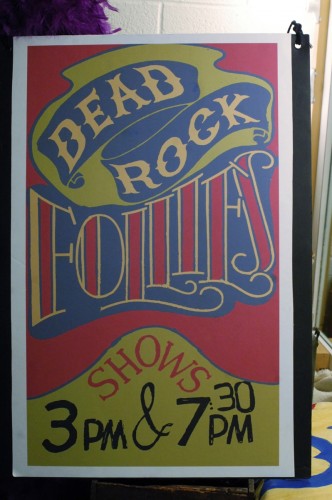
I did some graphic design on this show as well. The set designer found a great research image for the signs, which were meant to invoke a community vaudeville show performed out West in the 1930s. I mimicked the colors and layout of the research, changing the words on the poster to match what was in the script. The poster above was printed out three feet tall. I also adapted the size and scale of the poster so a similar image could be used on the flyers and programs that were also props in this show.
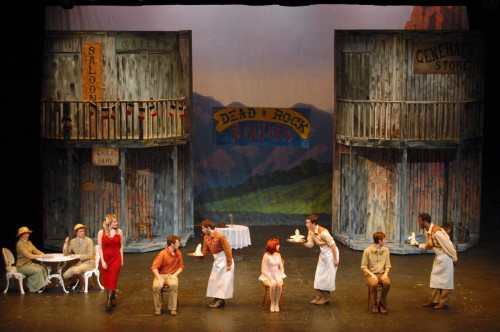
The penultimate scene in the play takes place in the Main Street of the town. Though this set piece appears throughout the play, it has been transformed for this last scene into a more fancy French-inspired café. The waiters bring out trays with fancy napkins on them during a brief musical number. The set designer and I decided it would be a nice touch if the napkins would be folded rather than just draped over their arms, so we found instructions for folding a napkin into a fleur-de-lis shape. A prop master is always finding little touches like that to shape the details in the props.
Credits:
Crazy for You, Elon University.
Directed by Catherine McNeela.
Choreography by Linda Sabo.
Set Design by Natalie Taylor Hart.
Lighting Design by Bill Webb.
Costume Design by Jack Smith.
Sound Design by Michael Smith.

